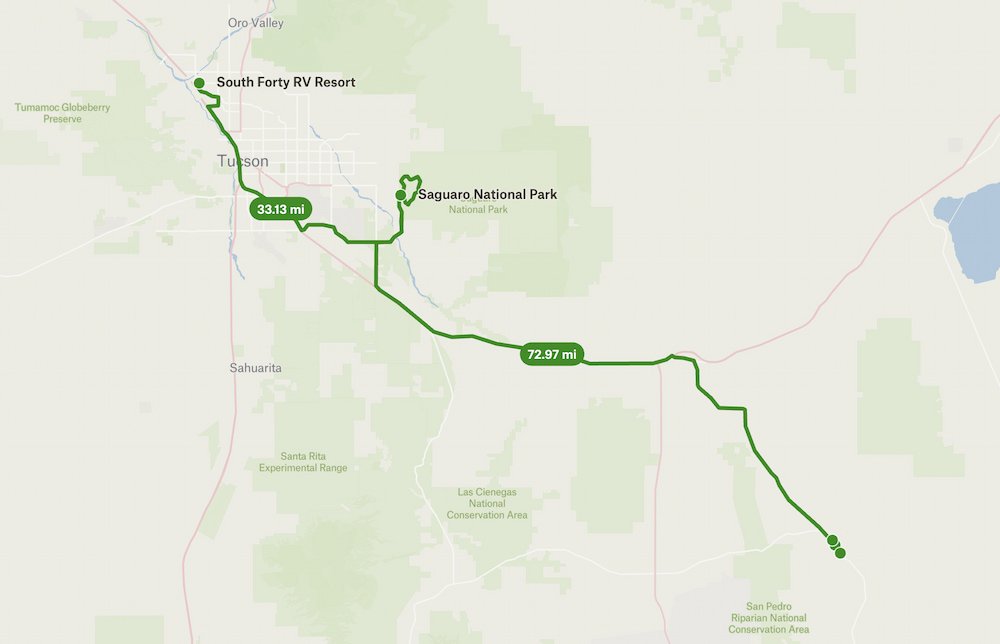The Saguaro (correct pronunciation: suh-waa-row) cacti are the biggest cacti in the world. They grow slowly at first–an inch or so during the first 6-8 years. At 70 years old they start growing arms. They get to 12 -15 meters (40-50 feet) tall when they’re about 150 years old!
Saguaro National Park is part of the Sonoran Desert and home to these enormous cacti. It was incredible to see so many different “personalities” of cacti–some stood armless as single columns, others had multiple limbs, some were growing stumps, others had limbs drooping toward the ground, and some even looked like they had faces on them!
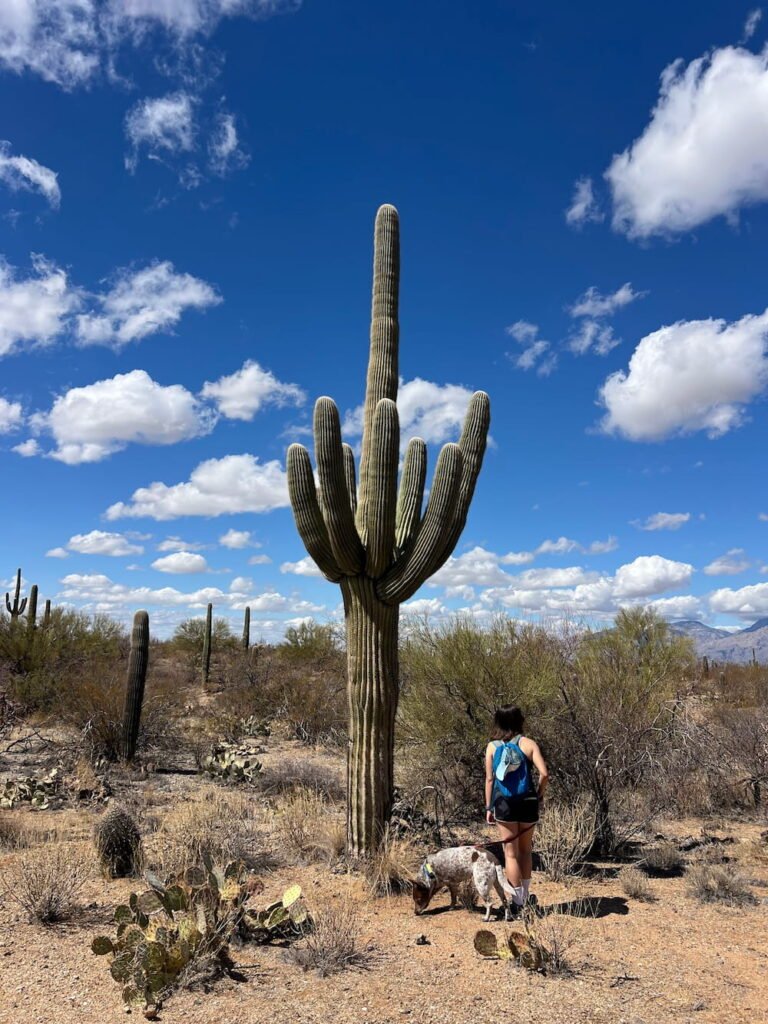
Since we were here in winter, we didn’t see the cream-colored flowers that appear on the cacti in early summer, which then attract birds, bees, bats and moths to feed on their nectar. In the summer the deep-red fruit ripens, which is then used to make syrup, jelly, ceremonial wine and other delicious foods (our first cactus treat was the prickly pear cactus ice cream in Sedona).
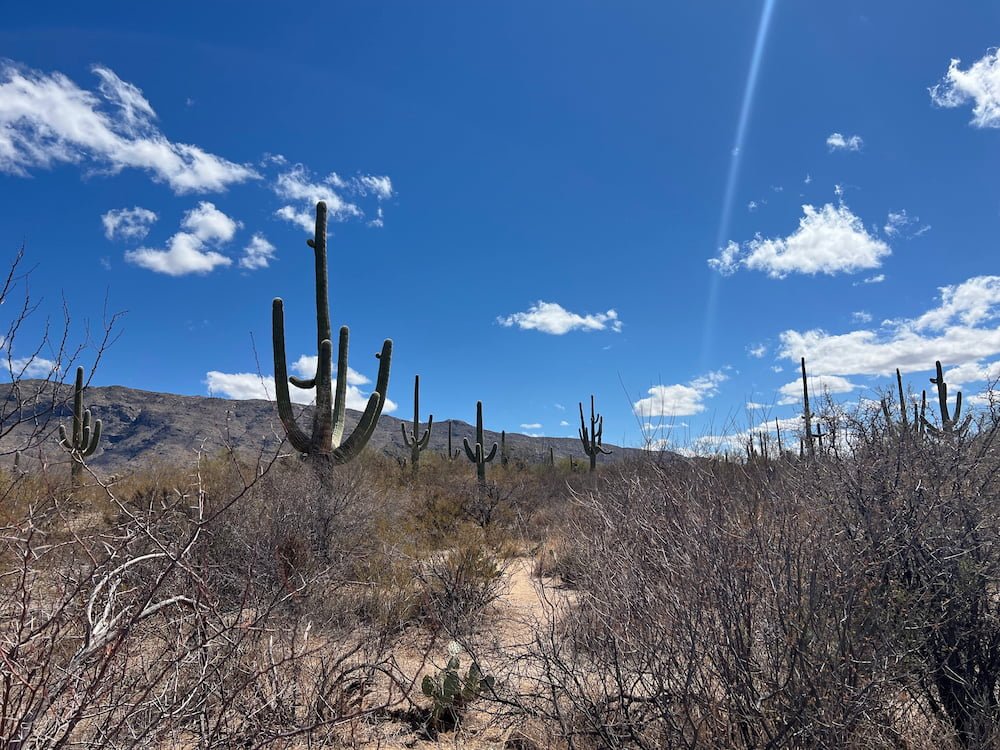
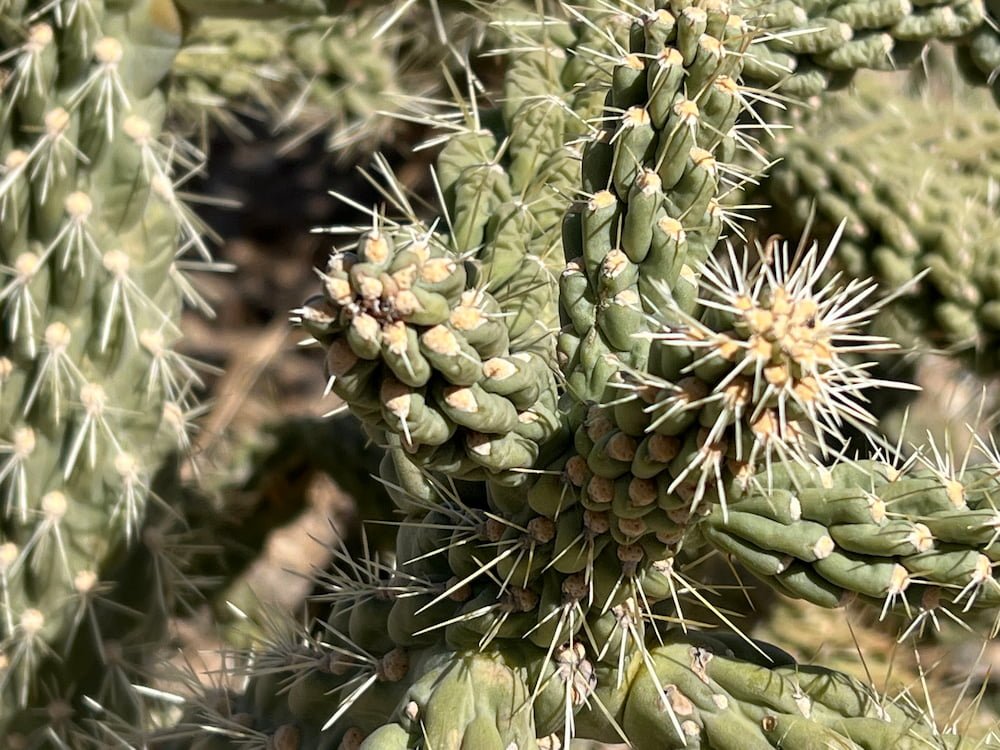
There are multiple trails at Saguaro National Park, and we took the short but cacti-packed Desert Ecology Trail, which is paved and good for leashed dogs to walk across. We had parked our RV in a different area so had cut across Cactus Forest Loop Drive to get there (the Park is a bit tight for RVs to wind through), which however did mean that we got on a trail where we brushed up against spiky plants. Probably a hike to do in pants and long socks.
Even when we left the National Park, we could still see hundreds of Saguaro cacti, lined up along the hills and ridges for miles. It’s such an extraordinary site that we enjoyed.
Tombstone
About an hour away from Saguaro National Park is the town of Tombstone, known for its history as a lawless Wild West town (and a 1990s Val Kilmer/Kurt Russell movie of the same name loosely depicting the town in its heyday). On the fringes of the town is the Boothill Graveyard, the final resting place for the town’s first pioneers and was used from 1878 to sometime around 1884. While Tombstone was known as “The Town Too Tough to Die”, there are 256 graves here, with 93 unknown or unmarked. Because of the many violent deaths of the early days, the cemetery became known as Boothill Graveyard, where outlaws are buried next to their victims. Wandering up and down the rows in the graveyard, the reasons for death are often mentioned. There is also a little pamphlet that will list the cause of death if known–including illnesses like diptheria and pneumonia, fatal shootings, beatings, stoned to death by Apaches, murdered, hanged by mistake, poisoning, suicides, injuries caused by falling from horses, and falling from a wagon and being crushed by its wheels. All terrible days to die! Boothill was neglected for many years, but has since had work to preserve the main part of the cemetery as visitors see it today.
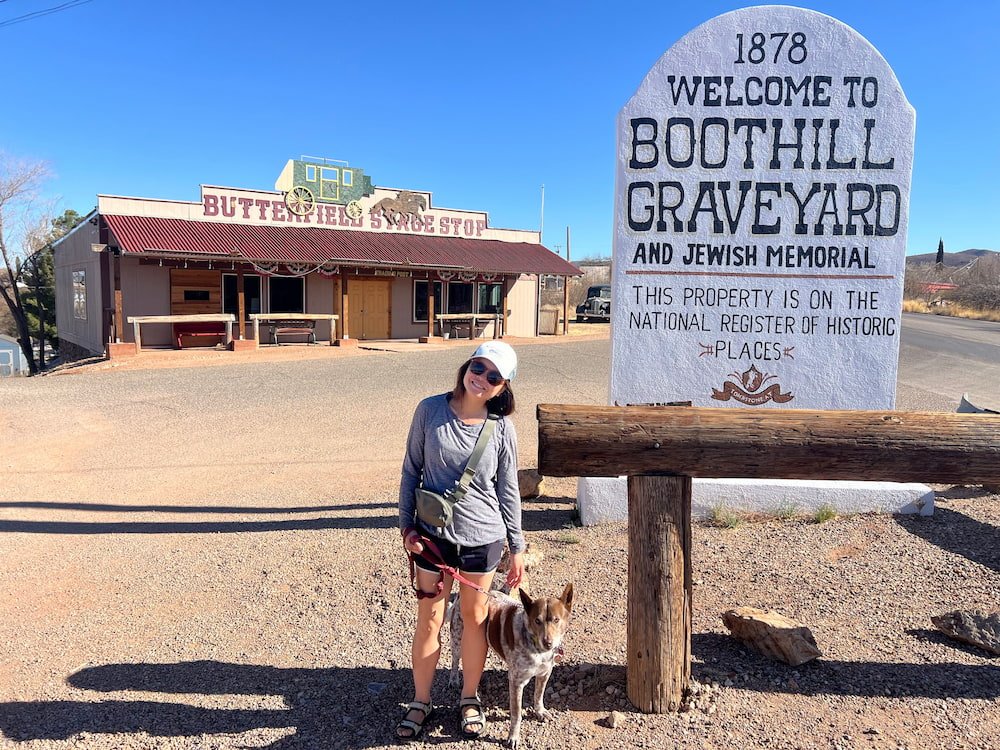
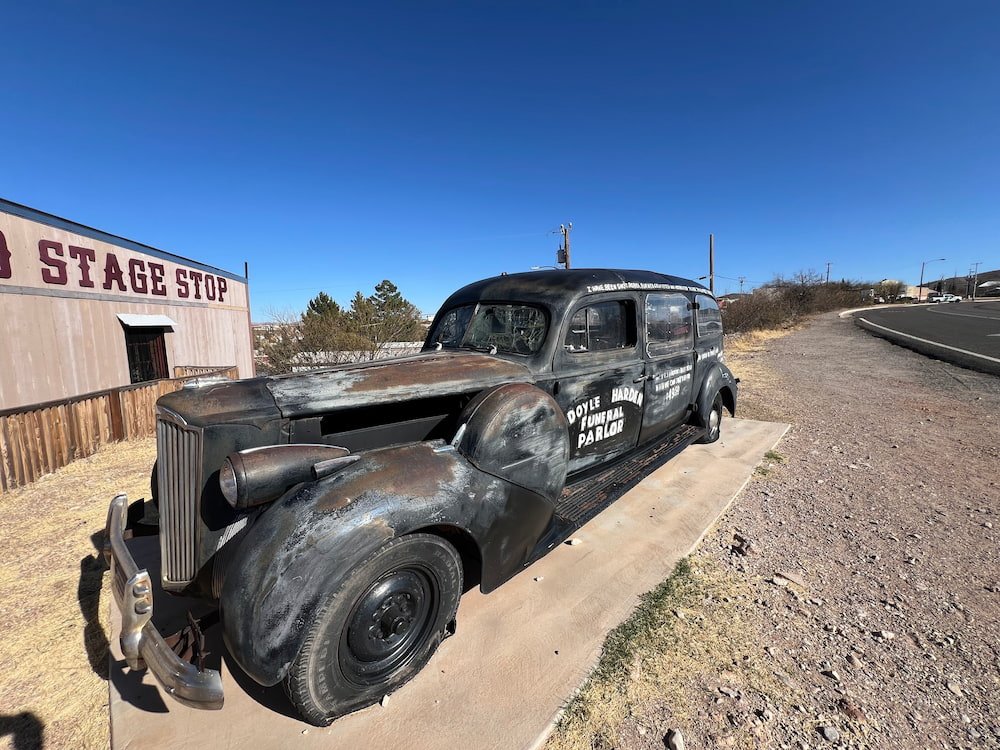
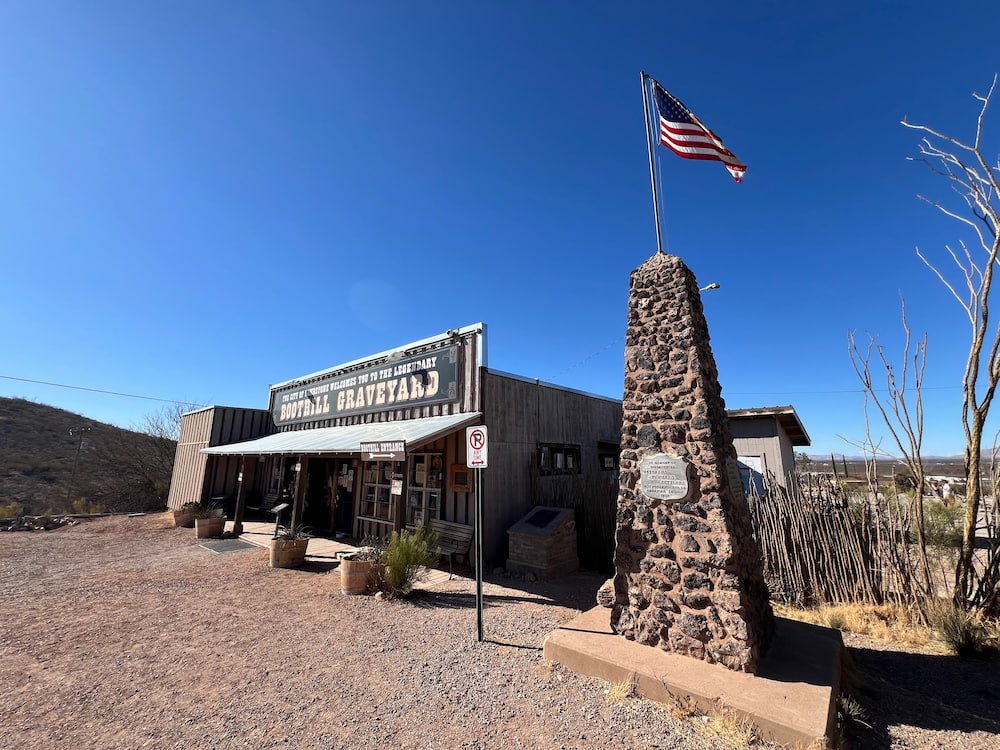
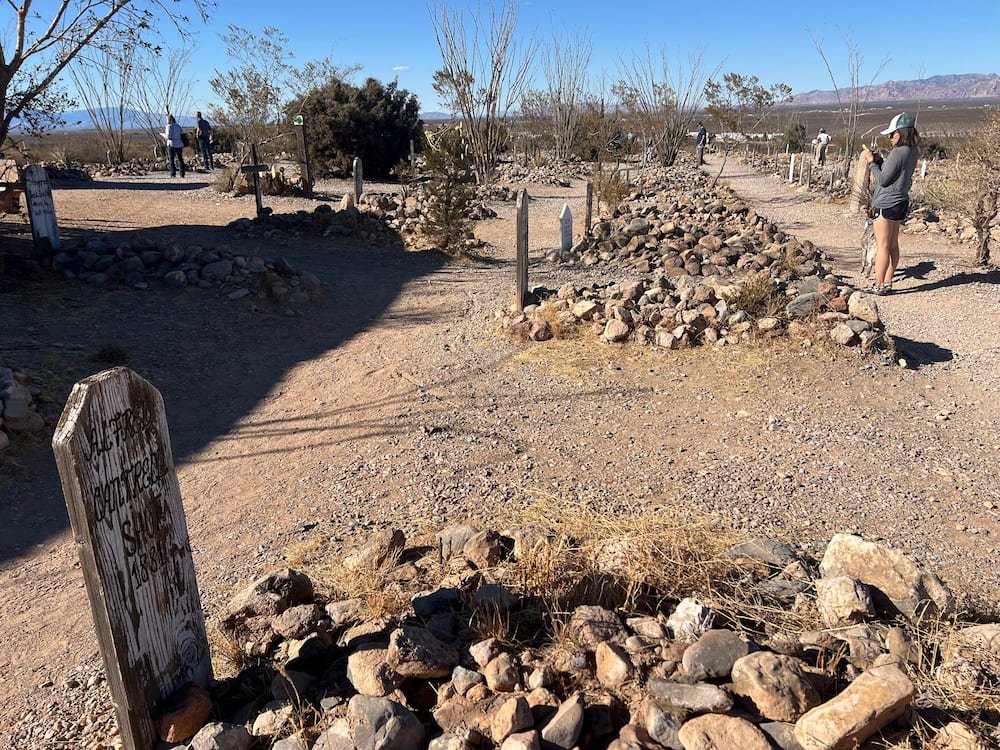
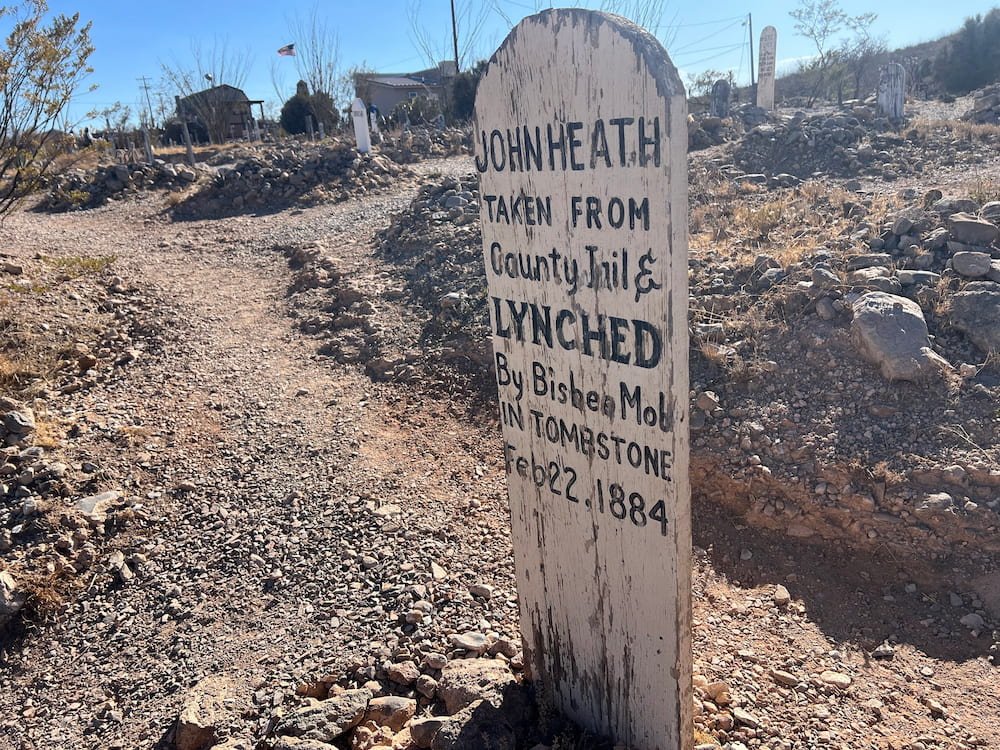
We then attempted to see the Schieffelin Monument, the final resting place of Ed Schieffelin, the founder of Tombstone who kicked off the silver mining boom in the town. Unfortunately the road is deemed too “primitive”--it’s a very bumpy gravel road to get there and a bit out of the way. Our RV immediately struggled and clanged around as soon as we started on the road, so we reversed pretty quickly! That evening, we parked on Middlemarch Road just outside Tombstone for the night, in a fairly quiet but windy spot overlooking the town below.
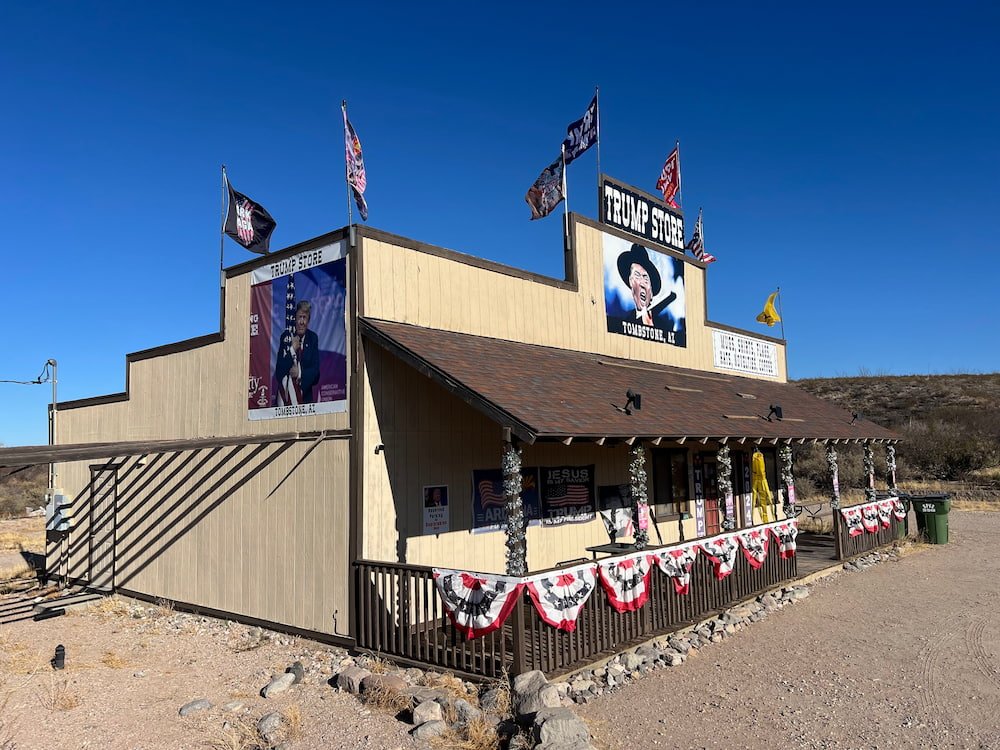
On our way to find a place to park for the night we passed the Trump store and had to take a photo (even though it was closed). We ended up parking on some BLM land not far from town.
Route Map
